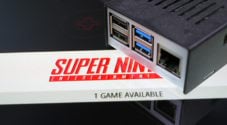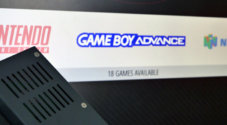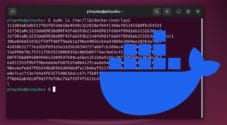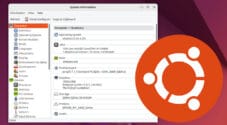In this article, we will be unboxing and quickly checking out the MiSTer Pi FPGA Board.
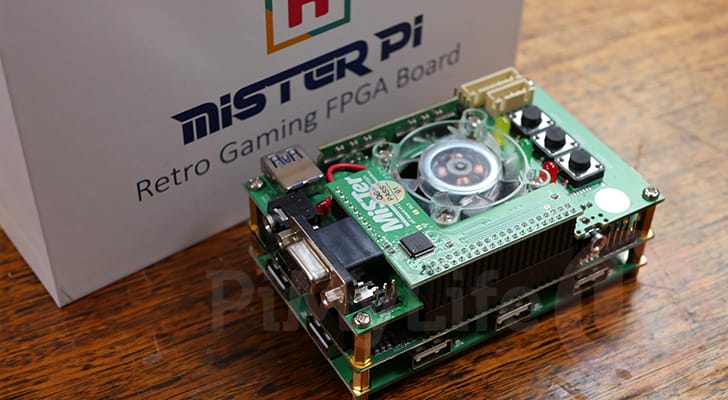
MiSTer Pi is a FPGA development board developed by the company Retro Remake as an affordable clone of Tesaric’s DE10-Nano. It’s designed with a primary focus on running the MiSTer operating system.
This board features all the hardware you need to get the MiSTer cores up and running without the significant costs that typically come with these FPGA boards.
Retro Remake even offers a bundle with all the additional add-on boards you need for the best experience with the MiSTer FPGA cores. For example, the additional 128MB SDRAM module is a must for many emulation cores.
With the introduction of the MiSTer Pi, FPGA emulation actually becomes a viable alternative to using other devices for emulation such as a Raspberry Pi. While the Raspberry Pi is a capable device in its own right, you often sacrifice accuracy. With Retro Remakes MiSter Pi, you aren’t even saving that much money anymore for a more accurate and often nicer experience.
What is MiSTer and What is an FPGA
If you are new to this, you are probably wondering what is MiSTer, and what is an FPGA?
Let’s start by giving you a very quick and rough idea of what an FPGA is. FPGA stands for Field-Programmable gate array. It is a special chip where the logic blocks inside of it can be reprogrammed to perform different functions. This differs drastically from a typical CPU, for example, where the functionality in the chip is the only functionality you get
MiSTer FPGA is an open-source project that aims to utilize these FPGA boards to accurately emulate retro video game consoles. Since the FPGA can be re-programmed, it can be adjusted to act like the original core. A key advantage of this is that you can get cycle-accurate emulation without the significant overheads required to achieve it, like software emulation.
Unboxing the MiSTer Pi FPGA Board
Let us start by exploring how the MiSTer Pi is boxed. We got our hands on what is called the “mega pack,” so our bundle came with all of the add-ons that Retro Remake currently offers. This means we will have the SDRAM, IO Board, and USB hub within this box.
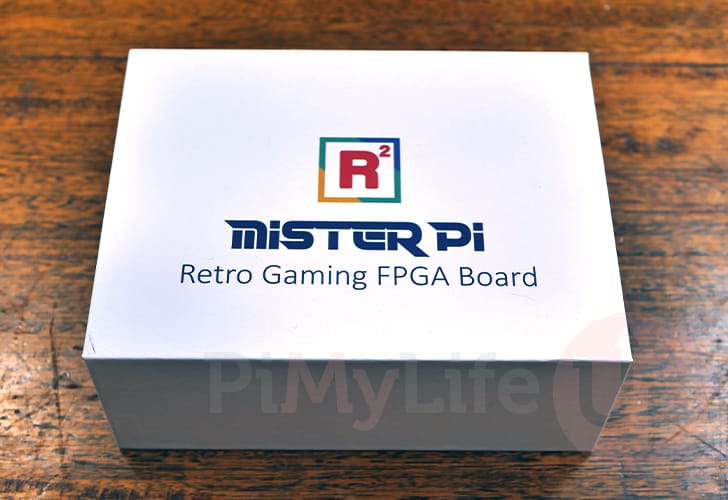
The outside shipping box is clean, clearly indicating what it contains, and features Retro Remake’s logo. The box definitely doesn’t feel flimsy, with the company utilizing relatively thick cardboard. Like the SunFoudner products we have reviewed in the past, it feels like Retro Remake knows how to package a product well. Despite traveling a fair distance to get to us here in Australia, there was only some minor damage to the outer box.
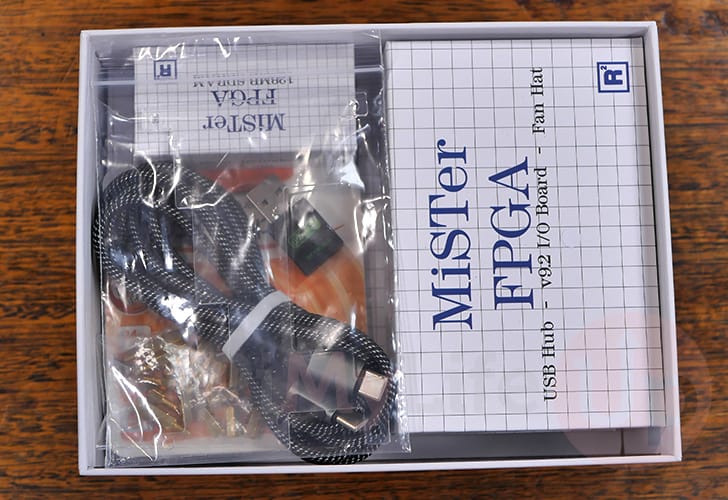
Inside the packaging, you will find the box for the MiSTer Pi and the rest of the components bundled in the mega pack.
Everything was kept within its own shipping box, except for the USB-C cable, acrylic plate, and a mini-Wi-Fi and Bluetooth dongle.
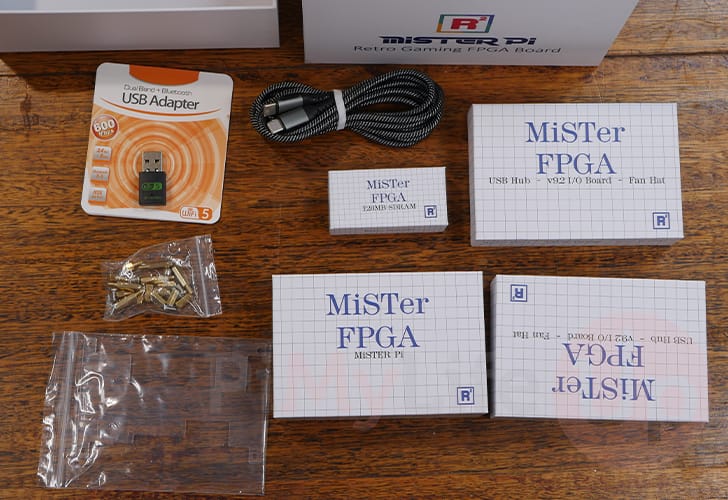
Checking out the MiSTer Pi FPGA Box
The main thing you will be interested in if you buy this bundle is the MiSTer Pi FPGA Board itself. Opening the shipping box, you will be greeted with the FPGA Board wrapped in an anti-static bag.
This anti-static bag definitely makes the MiSTer Pi board feel like a tight fit within the box. However, with that said, the extra protection around a board like this FPGA board is always nice to see, especially considering it is a bulk of the cost.
The box has its own extra padding to ensure that the board won’t bounce around during shipping and should stand up to a bit of knocking around.
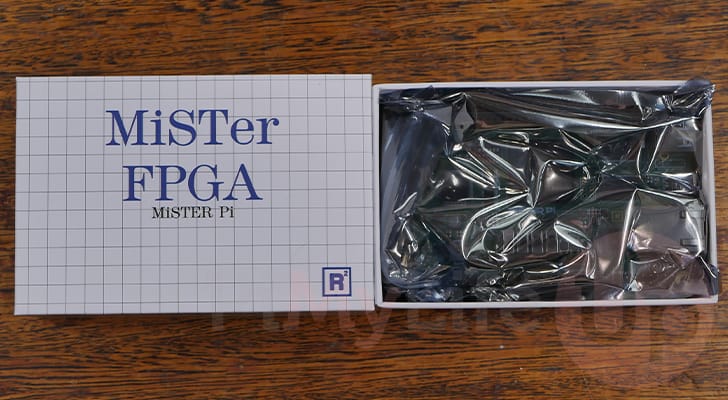
Unwrapping everything you will be greeted by the MiSTer Pi FPGA board itself. Here, you can see the star of the show, the Altera Cyclone V FPGA.
This is the chip that the MiSTer operating system will reprogram to run various retro games. Within this chip, you will find the FPGA and a small ARM chip used to run your operating system. In our case, this operating system will be MiSTer.
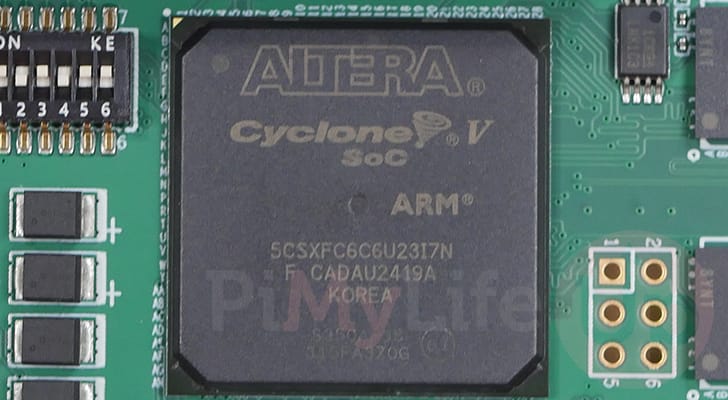
Looking over the board, you can see some key enhancements that Retro Remake introduced with their variant of the MiSTer FPGA Board. One of the ones we liked the most was the inclusion of USB-C PD support.
This makes powering your MiSTer Pi easier as you don’t have to stress about a proprietary charger, and most people will have a USB-C cable and charger sitting around somewhere, as almost all modern phones use them.

Another quality-of-life improvement with Retro Remake’s MiSter Pi is the addition of a new header that you will find on the bottom of the board.
This header is basically to allow the MiSTer Pi to talk with its USB add-on board directly. There is no need for a USB cable to join the two boards as they can receive power and communicate over the header.
This connection saves you from wasting a USB port on the MiSTer Pi FPGA Board itself and makes the whole setup feel like a more complete package.
This change has one tiny drawback if you use a pre-existing USB hub add-on from a different MiSTer FPGA board. With the addition of this header on Retro Remakes version of the MiSTer, they swapped out the micro-USB port with a full-sized A port. While this port is way more versatile and reliable, it means you will need to use a micro-USB to USB-A cable to connect a pre-existing MiSTer USB board.
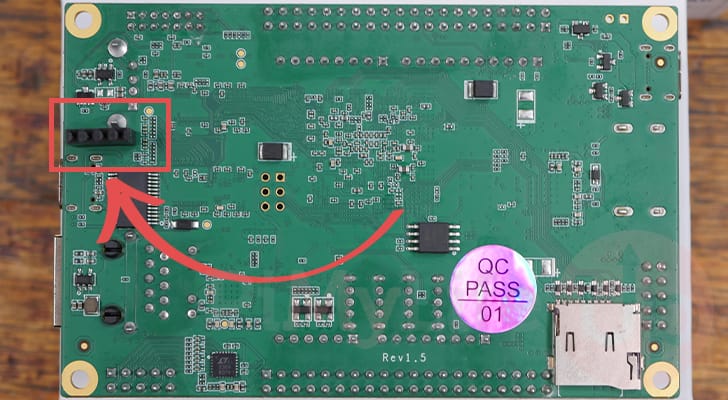
Exploring the Addon Boards
As mentioned, since we bought the MiSTer Pi mega pack, we got the three add-on boards that Retro Remake. Let us quickly go over these boards and what extra functionality they add to your MiSTer setup.
128MB SDRAM
If you were setting up a MiSTer FPGA Board like the MiSTer Pi, the one add-on board that is a complete must is the 128MB SD RAM.

This SDRAM gives the many MiSTer cores a bit more memory to play around with. Many cores won’t even function without this add-on, significantly reducing the number of old consoles you can emulate.
This board just slots into the GPIO pins of your MiSTer FPGA Board. Please pay attention to the sticker on this as it tells you which way this should be facing when you insert it.
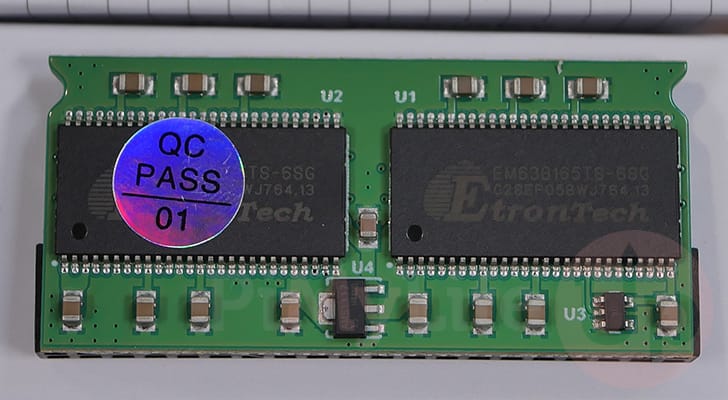
MiSTer USB Hub
Alongside the SDRAM board is the MiSTer USB Hub. Retro Remake sells a version of this board with slight tweaks to improve how it integrates with the MiSTer Pi FPGA.
With this board you will be able to connect up to 9 USB-A devices to your FPGA board.
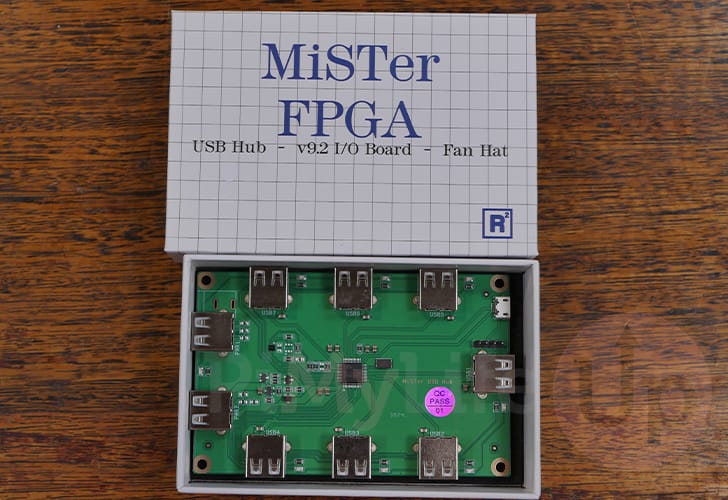
With other versions of this board, you have to connect it to the MiSTer FPGA Board through a micro-USB to micro-USB adapter.
Retro Remake keeps the micro-USB connector but adds an additional header that allows it to plug directly into the MiSTer Pi and saves the need to use the USB connection.
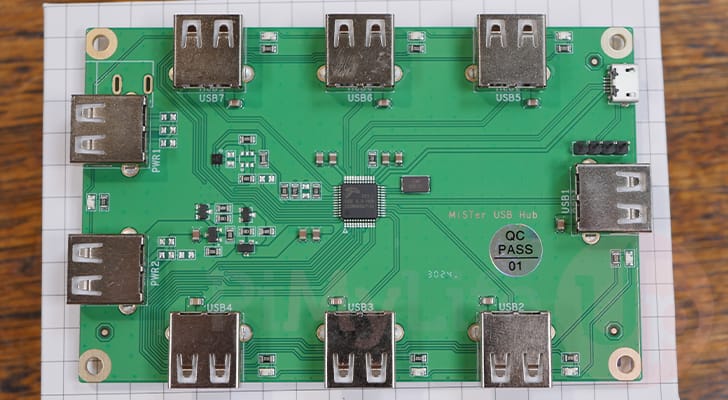
From what I’ve seen of this board, nothing stops you from using it with other MiSTer FPGA boards as the additional header pins should be out of the way of any components.
MiSTer A/V Pro v9.2
The final add-on board we got with our MiSTer Pi bundle is the MiSTer A/V Pro v9.2. This add-on board greatly improves the audio and video output options.
This add-on board is a must if you intend to use any analog video and audio formats, as the standard MiSTer board only comes with an HDMI port.
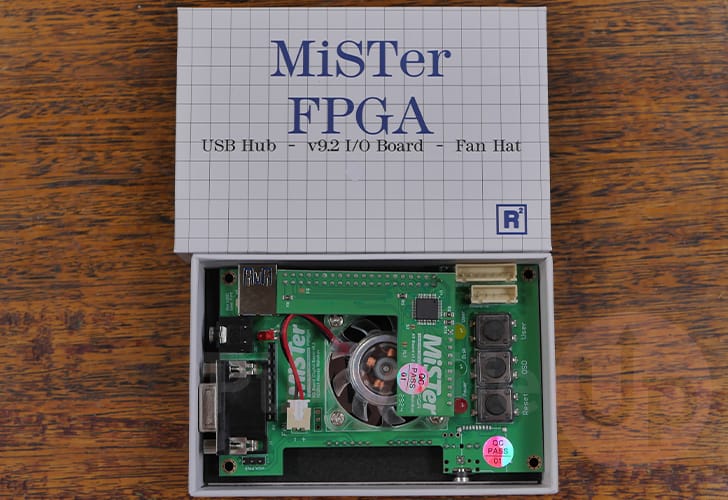
The I/O actually comes in two different board. A smaller board that plugs into the GPIO pins of your MiSTer FPGA Board and a larger one that connects using a different set of pins.
This smaller board contains a 24-bit DAC that provides you with analog output. You will find the 24-bit DAC itself at the top of this board. This is the chip that converts the digital signal from your FPGA board to an analog signal.
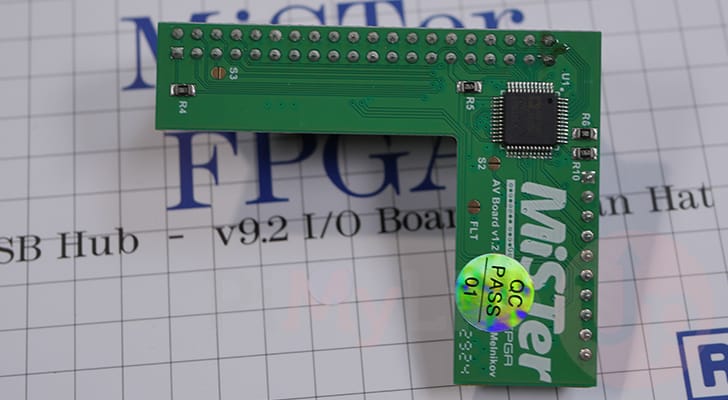
At the bottom of the board, you will see the GPIO pin header, another chip, and also another connector. When installing this module, you should pay attention to the smaller connector to ensure it aligns correctly with your MiSTer Pi.
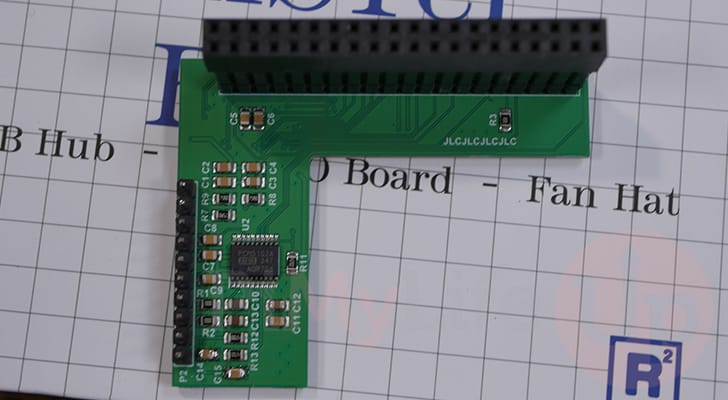
The larger board in this add-on bundle is where you will find all the indicator lights and control buttons and the various additional outputs that the A/V board provides you with.
You will quickly find these control buttons to be super useful as they allow you to do things such as reset the FPGA board really quick and easy. T
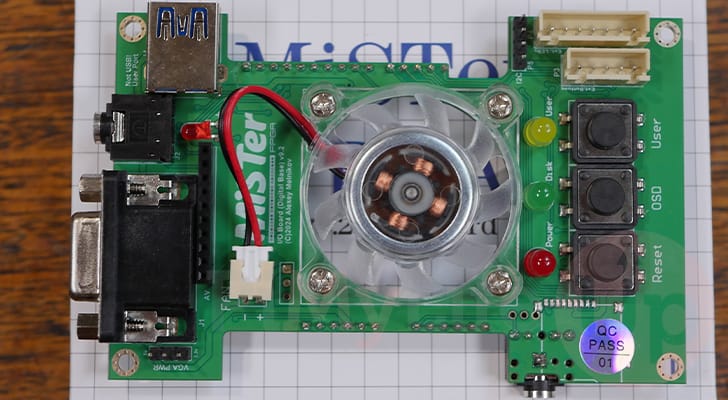
This main board is also the one that the included fan is mounted onto. This fan helps keep the temperature of your MiSTer Pi under control.
While Retro Remake opted for a cheaper fan, we feel like they made the right choice over using a significantly more expensive fan like a Noctua. If a user feels like the fan is too loud, replacing the fan with their own seems like something that shouldn’t be too hard.
If you want to improve your MiSTer Pi’s cooling with a better fan, the size of the existing fan is 40mm. Additionally, you may want to consider adding heatsinks to the main chips on the board to improve it further; however, this shouldn’t be required in most cases.
A significantly reduced price point for the MiSTer FPGA Board stack is worth cutting some corners with things people would only notice if it was pointed out to them.
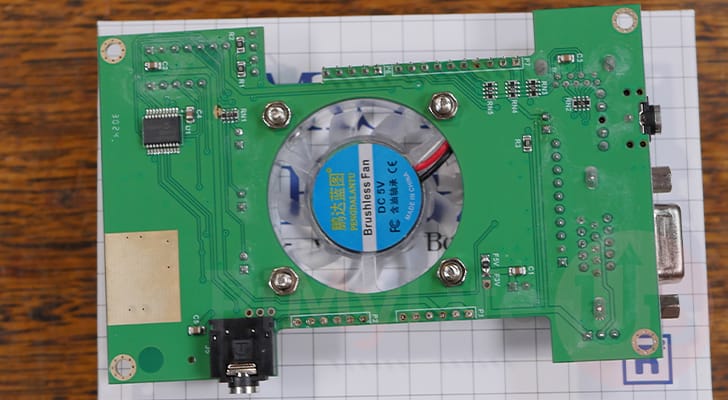
Building the MiSTer Pi FPGA Board
For this section, we will be quickly going over how the MiSTer Pi triple stack was to put together. If you have only bought the FPGA board, all you need to do is plug in an SD card with the MiSTer operating system installed on it and plug in a USB-C connector and HDMI cable, and you are ready to go.
Now, if you bought the MiSTer Pi alongside the three add-on boards, then there are a few things you have to do. Luckily, this board has everything you need to attach all boards cleanly.
Retro Remake included a spare for each standoff, so you don’t have to worry too much if you misplace one.
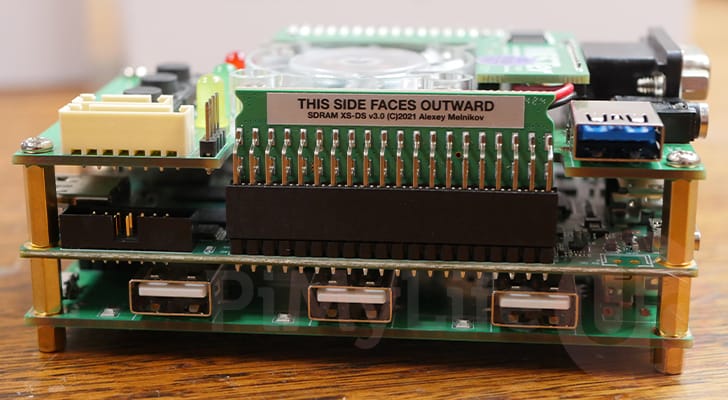
You start with the USB-HUB board on the bottom. The smallish stand-offs go on the bottom of the board, and then the female-to-female stand-offs are screwed onto those to lock everything together.
When combining your MiSTer Pi with the USB-HUB, be careful to make sure the header on the bottom of the MiSTer and the header on the add-on board line up.
After that you then install the longer stand-offs to lock your MiSTer Pi to the USB-addon standoffs.
Your next step is to insert the main A/V IO add-on board onto the top of your FPGA board. There is a bit more going on here, so you must be careful that the pins align correctly before pushing the boards together.
Both the A/V component of the IO add-on and the SDRAM aren’t inserted into the FPGA board until the very end.
While this process could have been made a bit cleaner, that would have required Retro Remake to drop support for other third-party add-ons and lock people into their product lineup. You appreciate the team’s effort to make a product with notable quality-of-life improvements while retaining compatibility with the MiSTer FPGA lineup.

Running the MiSTer Pi FPGA Board
The set-up experience for your MiSTer Pi is just like any other MiSTer compatible FPGA board. All you need to do is download the latest version of Mr Fusion and flash it to an SD Card.
We won’t be diving too much into the setup process for this article. But if you have ever used a device like the Raspberry Pi, you will be pretty familiar with this initial process.
Mr Fusion isn’t the operating system itself, but the installer that will set up MiSTer on your FPGA Board. This is basically the same process you would have to go with on any MiSTer FPGA board not just the MiSTer Pi.
The one catch is using the official installer, you will need a network connection to your MiSTer Pi. We are using an ethernet cable but you can also use a Wi-Fi dongle. The pack we purchased was shipped with one, but we have ethernet that is easy to access.
With our MiSTer Pi now plugged in, we will be greeted by the following screen. This process can take some time to complete.
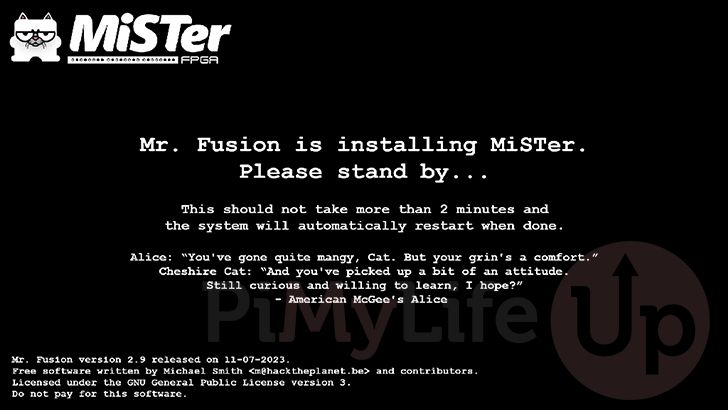
After a few minutes, we can now see that our MiSTer Pi is now up and running and successfully booted into the MiSTer FPGA operating system.
The whole experience felt pretty effortless, the MiSTer Pi was easy enough to put together even with the additional add-on boards.
As what is our first entry into the world of FPGA retro emulation, we are quite excited to check out what this device is capable of and explore the best ways to make use of it.
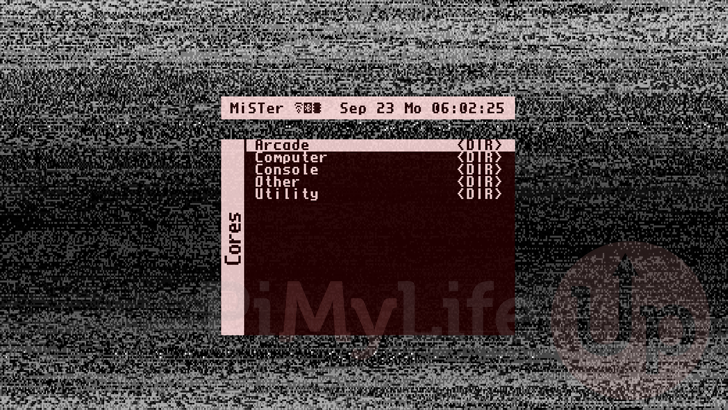
Conclusion
If you have got to this point, you should hopefully have some idea what the MiSTer Pi FPGA Board from Retro Remake is.
So far, we have found Retro Remake’s MiSTer Pi a great introduction to the world of FPGA emulation. It brings with it a wealth of quality life improvements while significantly reducing the entry price tag.
Personally, we found the pricing for getting a triple stack prior to the release of this FPGA board to be very prohibitive.
If you have any questions about our quick thoughts on the Retro Remake’s MiSTer Pi, please feel free to drop a comment below.





